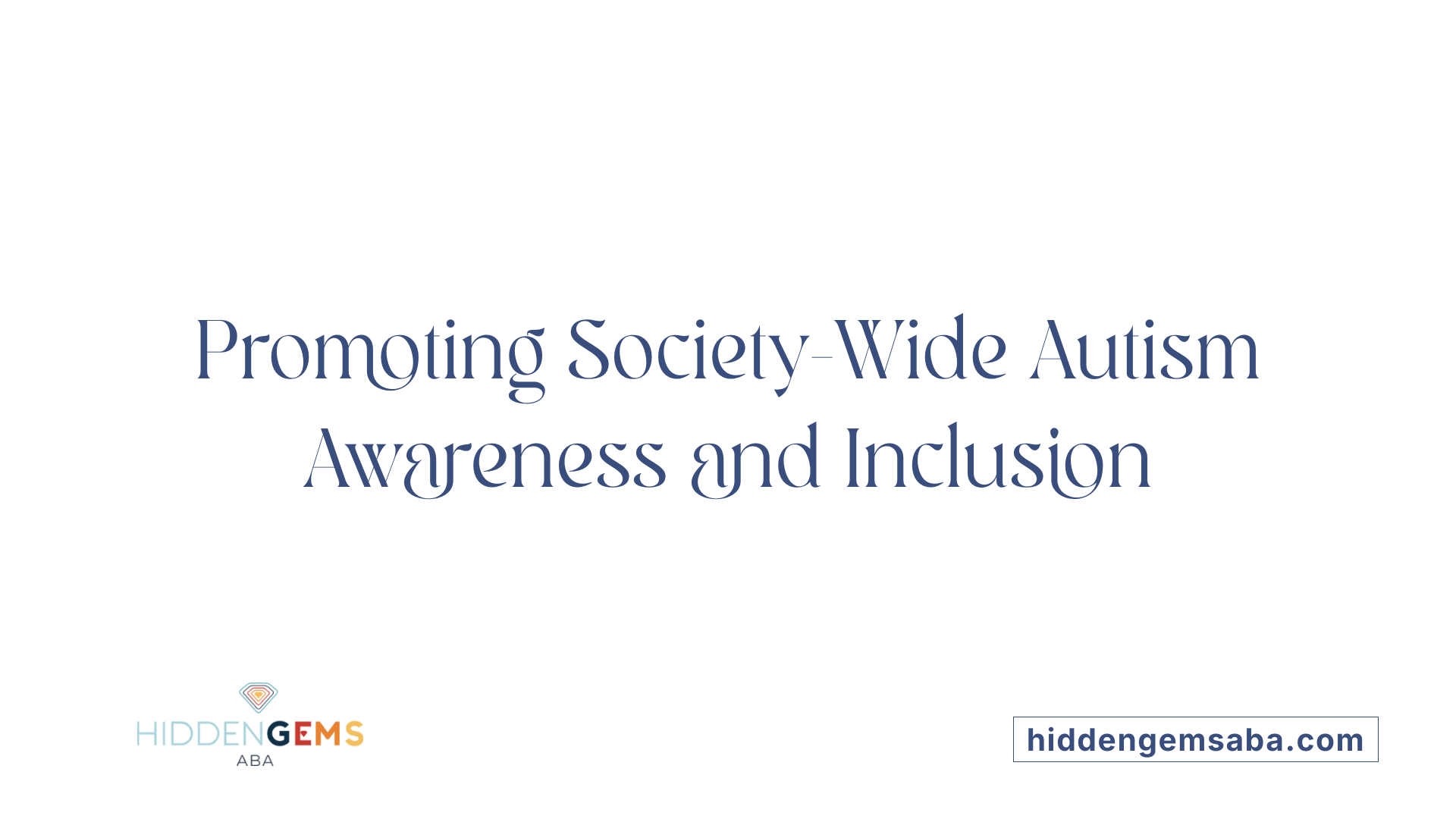Introduction to ABA and Autism
Autism Spectrum Disorder (ASD) is a complex neurodevelopmental condition characterized by differences in communication, social interaction, and behaviors. As awareness around autism grows, so does the importance of evidence-based interventions that support individuals’ development and inclusion. Applied Behavior Analysis (ABA) has emerged as the gold-standard therapy, grounded in scientific principles, to help improve quality of life and foster independence for many living on the spectrum.
What Is ABA Therapy and How Does It Work?

What is ABA therapy and how does it work?
Applied Behavior Analysis (ABA) therapy is a scientific method used to understand and change behavior. It is based on the science of learning and behavior, aiming to promote helpful behaviors and reduce harmful or unproductive ones. ABA helps practitioners see how behavior is influenced by the environment, including what happens before and after a behavior occurs.
At its core, ABA uses principles of learning theory, such as positive reinforcement—where a valued reward follows a behavior to increase its chances of happening again. It involves the analysis of the Antecedent (what happens before the behavior), Behavior itself, and Consequence (what happens after the behavior), known as the A-B-Cs model. This helps identify patterns and tailor interventions effectively.
ABA therapy is highly adaptable. Each treatment plan is customized to meet an individual's specific needs and goals, whether that is improving communication, social skills, daily living, or reducing problem behaviors. Treatment plans are designed and overseen by qualified behavior analysts, often called Board Certified Behavior Analysts (BCBAs). This ensures that interventions are scientifically sound, ethical, and suited to each person.
The techniques used in ABA are varied and include strategies like discrete trial training, modeling, prompting, and positive reinforcement. For example, a child might be rewarded with praise or tangible items when they successfully communicate or participate in social activities. Through consistent application of these techniques, children can develop new skills and decrease behaviors that interfere with learning or socialization.
In addition to direct intervention, ABA involves training parents and caregivers, so they can continue supporting skills at home, school, and in community settings. Evidence from numerous studies confirms that ABA is effective, especially for children with autism spectrum disorder (ASD). Long-term, intensive ABA programs can lead to significant improvements in communication, social participation, independence, and overall quality of life. These results are why ABA therapy is considered the gold standard for autism intervention by organizations like the U.S. Surgeon General and the American Psychological Association.
How Does ABA Support Individuals With Autism?
How does ABA therapy support individuals with autism?
Applied Behavior Analysis (ABA) is a science-based therapy that really focuses on understanding how behavior works and how it is influenced by the environment. Its primary goal is to help individuals with autism develop a range of skills while reducing behaviors that might hinder their progress.
ABA supports skill development in many important areas. These include communication, social skills, daily living tasks like dressing or toileting, and academic abilities. Through structured programs, children learn to express themselves better, engage more meaningfully with others, and gain independence in everyday activities.
One of ABA's strengths is its ability to reduce challenging behaviors. Using positive reinforcement—where desirable behaviors are rewarded—ABA encourages children to adopt more helpful behaviors and decrease actions like aggression or self-injury.
ABA programs often use play-based methods and natural environment training. These strategies make learning more engaging by incorporating play and real-life situations, which help children generalize skills outside the therapy setting.
Family and caregivers are integral to ABA support. They are trained to implement strategies at home and in community settings, ensuring skill-building continues in everyday life, boosting consistency and success.
Research shows that early and intensive intervention with ABA yields the best outcomes. Starting therapy during early childhood and maintaining high levels of engagement can lead to significant development gains, including greater independence and social participation.
By analyzing behavior patterns and applying tailored interventions, ABA helps individuals with autism live more fulfilling, autonomous lives. It empowers them to communicate, learn, manage their behaviors, and participate actively in their communities.
Benefits and Evidence of ABA in Autism Intervention

What are the benefits and effectiveness of ABA therapy in autism intervention?
Applied Behavior Analysis (ABA) therapy is widely recognized as a leading, scientifically supported treatment for children with autism spectrum disorder (ASD). Through its focus on learning principles derived from operant conditioning, ABA helps improve critical skills such as communication, social interaction, and daily living behaviors.
Research consistently demonstrates the positive effects of ABA. Many studies and meta-analyses support its ability to foster social skills, language development, and adaptive behaviors. For instance, high-quality, intensive ABA programs—often beginning early in a child's life—can lead to significant developmental improvements. These include better speech, independence in routines like toileting, and emotional regulation.
The more hours of therapy a child receives, typically ranging from 10 to 40 hours per week, the more substantial the gains. Children engaging in early, intensive ABA tend to participate more fully in mainstream education and community activities. For example, some children achieve enough independence to return to regular classrooms, while others learn essential skills such as self-care and communication.
ABA therapy is highly customized, focusing on the individual’s strengths, needs, and interests. Techniques such as discrete trial training (DTT) and pivotal response treatment (PRT) are commonly used to promote skill acquisition. Parental involvement is also emphasized, enabling families to reinforce learning at home and ensure consistency.
Overall, evidence indicates that ABA not only boosts functional skills but also reduces challenging behaviors like self-injury. Many experts regard ABA as a gold standard in autism intervention—thanks to its strong research backing, clear structure, and measurable outcomes, it significantly enhances the quality of life and fosters greater independence for children with autism.
Addressing Misconceptions and Ethical Concerns
What misconceptions exist about ABA therapy, and what ethical considerations are involved?
Many misunderstandings surround Applied Behavior Analysis (ABA), often portrayed as a therapy solely focused on making autistic children conform to neurotypical standards. Some believe it is harmful or that its primary aim is to eliminate autism altogether. However, this perception overlooks the scientific foundation of ABA, which is designed to support individuals in developing skills like communication, independence, and social participation.
Historically, ABA included techniques involving punishments or aversive stimuli, such as electric shocks, especially in its early beginnings in the 1960s. These methods are no longer part of modern practice, reflecting a significant shift towards more ethical, respectful strategies. Today, ethical ABA prioritizes positive reinforcement, which involves rewarding desirable behaviors to encourage their recurrence. This approach aligns with ethical standards emphasizing dignity and respect for the individual.
A critical aspect of ethical ABA is informed consent. Families and individuals should be fully aware of intervention goals, methods, and progress. Interventions are tailored to each person’s needs, values, and cultural background, ensuring person-centered care. This means respecting individual autonomy and involving families in decision-making processes.
Cultural sensitivity is essential in ethical ABA practice. Practitioners must recognize and honor diverse cultural beliefs and preferences, avoiding coercive or one-size-fits-all strategies. The goal is to empower individuals to achieve their personal and social objectives while maintaining their dignity and promoting emotional well-being.
In sum, addressing misconceptions about ABA involves educating the public and practitioners about its scientific basis, emphasizing the use of positive and respectful methods, and upholding ethical principles that prioritize the rights, preferences, and cultural identities of those served. When practiced responsibly, ABA is a person-centered, adaptable approach that can significantly enhance quality of life for individuals with autism and other developmental challenges.
The Origins and Development of ABA Practice

What is the history and common practices involved in ABA therapy?
Applied Behavior Analysis (ABA) has its roots in the principles of behaviorism that emerged in the early 20th century, notably through the work of psychologists like John B. Watson and B.F. Skinner. Watson promoted the idea that observable behaviors, and not internal mental states, should be the focus of scientific study. Skinner expanded this with his development of operant conditioning, emphasizing how behaviors could be increased or decreased through reinforcement or punishment.
The formal development of ABA as a distinct therapeutic approach began in the 1960s, largely influenced by the pioneering research of Dr. O. Ivar Lovaas. Lovaas utilized intensive, structured interventions aimed at teaching children with autism essential skills, such as communication and social interactions, while reducing problematic behaviors. Central to ABA were techniques like discrete trial training, where skills are broken into small, manageable steps and taught repetitively with reinforcement.
In 1968, ABA was formally characterized by Baer, Wolf, and Risley, who outlined its core features: it should be applied to socially significant behaviors, be based on behavioral principles, and be data-driven and analytic. This definition helped standardize the approach and set standards for research and practice.
Over the decades, ABA has evolved considerably. It now incorporates more naturalistic and person-centered methods that respect the individual's preferences and promote generalization of skills beyond clinical settings. Strategies such as shaping (reinforcing successive approximations), prompting (cueing desirable behaviors), chaining (linking sequences of behaviors), and functional behavior assessments (to determine the purpose behind behaviors) are common.
The practice continues to expand with approaches like natural environment teaching and pivotal response training, which emphasize capturing teachable moments in everyday situations. Although initially criticized for its rigidity, modern ABA emphasizes ethical practices, positive reinforcement over aversive techniques, and individual tailoring.
In addition, the field addresses ongoing debates about neurodiversity and the importance of respecting differences in cognitive and behavioral styles. The focus of contemporary ABA is on enhancing quality of life, independence, and social participation, aligning with ethical standards and evidence-based practices.
Promoting Autism Awareness and Inclusion Through ABA
How does ABA therapy contribute to autism awareness and inclusion?
Applied Behavior Analysis (ABA) plays a vital role in fostering autism awareness and inclusion in society. Through its focus on developing communication, social, and adaptive skills, ABA helps individuals with autism participate more fully in community activities and educational environments.
ABA employs a range of evidence-based strategies such as reinforcement, prompting, and shaping. These methods are designed to teach desirable behaviors and decrease problematic ones, which encourages independence and improves social interactions.
A significant aspect of modern ABA is its emphasis on individualized and culturally sensitive approaches. By tailoring interventions to each person's unique background and needs, ABA services promote respect, understanding, and equitable treatment.
As children and adults with autism gain essential skills through ABA, they become better equipped to engage with peers, family, and community members. This participation increases awareness among the broader society, reducing stigma and misconceptions.
Furthermore, ABA supports the development of self-advocacy skills and confidence. These qualities help individuals express their needs and preferences, strengthening their voice in social and public settings.
Overall, ABA contributes to autism acceptance by enabling individuals with autism to break down barriers, participate actively in society, and live more independent, meaningful lives. It fosters a more inclusive environment where differences are understood and valued, helping to build a more accepting and supportive community for all.
Impact of ABA on Quality of Life and Long-Term Outcomes

Can ABA therapy improve the quality of life for individuals with autism?
Applied Behavior Analysis (ABA) has proven to be highly effective in enhancing the lives of those with autism spectrum disorder (ASD). It focuses on teaching essential skills such as communication, social interaction, and daily living activities, which foster greater independence.
ABA’s foundation lies in scientific principles like positive reinforcement, allowing individuals to learn new behaviors while reducing problematic or harmful behaviors. Through personalized and intensive interventions, often beginning early in life, ABA helps children develop skills that enable them to participate more fully in society.
Research shows that early and sustained ABA therapy supports improvements in language, cognition, and social skills. These advancements help children and adults perform daily tasks more independently, which greatly boosts their self-confidence and sense of autonomy.
Involving families in ABA programs enhances the generalization of skills to home, school, and community settings. This inclusive approach ensures that learned behaviors are reinforced across different environments, leading to sustainable improvements.
Overall, ABA contributes significantly to a person’s overall well-being. It promotes social engagement, helps individuals achieve milestones, and supports a higher quality of life by enabling greater participation in everyday activities and community life.
| Aspect | Impact | Additional Details |
|---|---|---|
| Development of independence | Promoted through skill-building | Focus on self-care, communication, and daily routines |
| Self-advocacy | Enabled by social and communication skills | Teaching appropriate behaviors and confidence in expressing needs |
| Reduction of challenging behaviors | Decreased through reinforcement of positive behaviors | Includes self-injury, tantrums, and aggression |
| Communication and social skills | Enhanced via structured interventions | Facilitation of peer interactions and community engagement |
| Family and community involvement | Strengthens overall outcomes | Training families and integrating community activities |
| Long-term benefits | Increased life satisfaction | Ongoing support for living independently and participating actively |
By focusing on personalized, evidence-based strategies, ABA offers a pathway toward a more fulfilling and autonomous life for individuals with autism, benefitting not only the individuals themselves but also their families and communities.
The Significance of Autism Awareness and Acceptance

Why is autism awareness and acceptance important?
Autism awareness and acceptance play a crucial role in building a more inclusive society. They help reduce negative stereotypes, misunderstandings, and fears that often surround autism spectrum disorder (ASD). When people understand autism better, they are more likely to foster empathy, respect, and love for individuals on the spectrum.
Educational campaigns and public outreach are essential tools in spreading accurate information about autism. By increasing knowledge, these efforts promote a sense of community understanding and support for autistic individuals.
Moving from awareness to acceptance encourages society to appreciate neurodiversity — the natural variation in human brains and behaviors. Acceptance emphasizes respecting autistic individuals' right to live authentically, without trying to change them into neurotypical standards.
Empowering autistic individuals through understanding and respect can significantly improve their mental health, self-esteem, and opportunities for success. When communities embrace acceptance, autistic people are more likely to participate fully, with dignity and independence.
In summary, fostering awareness and promoting acceptance helps create a safer, more welcoming environment where all individuals can thrive, contributing to a richer, more compassionate society.
Final Thoughts on ABA and Autism Awareness
As understanding of autism deepens, the integration of scientifically supported therapies like ABA plays a vital role in improving individual outcomes and fostering societal inclusion. Education, ethical practices, and personalized interventions grounded in respect for neurodiversity are key to supporting the full potential of every person on the spectrum. Embracing autism awareness and acceptance paves the way for a more compassionate, inclusive world where individuals with autism can thrive with dignity and support.
References
- Applied Behavior Analysis (ABA) | Autism Speaks
- The Top 10 Reasons Children With Autism Deserve ABA - PMC
- ABA and other therapies | Autism Speaks
- The Controversy Around ABA - Child Mind Institute
- What is autism? What is ABA? Building understanding in Autism ...
- Autism Acceptance Month: How ABA Therapy Promotes Inclusion
- Why Does ABA Help Children With Autism? - LeafWing Center
- Understanding Autism: The Role of ABA Therapy






